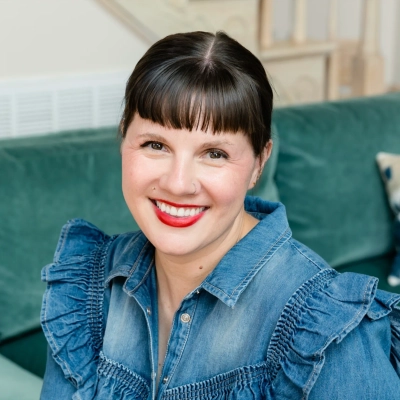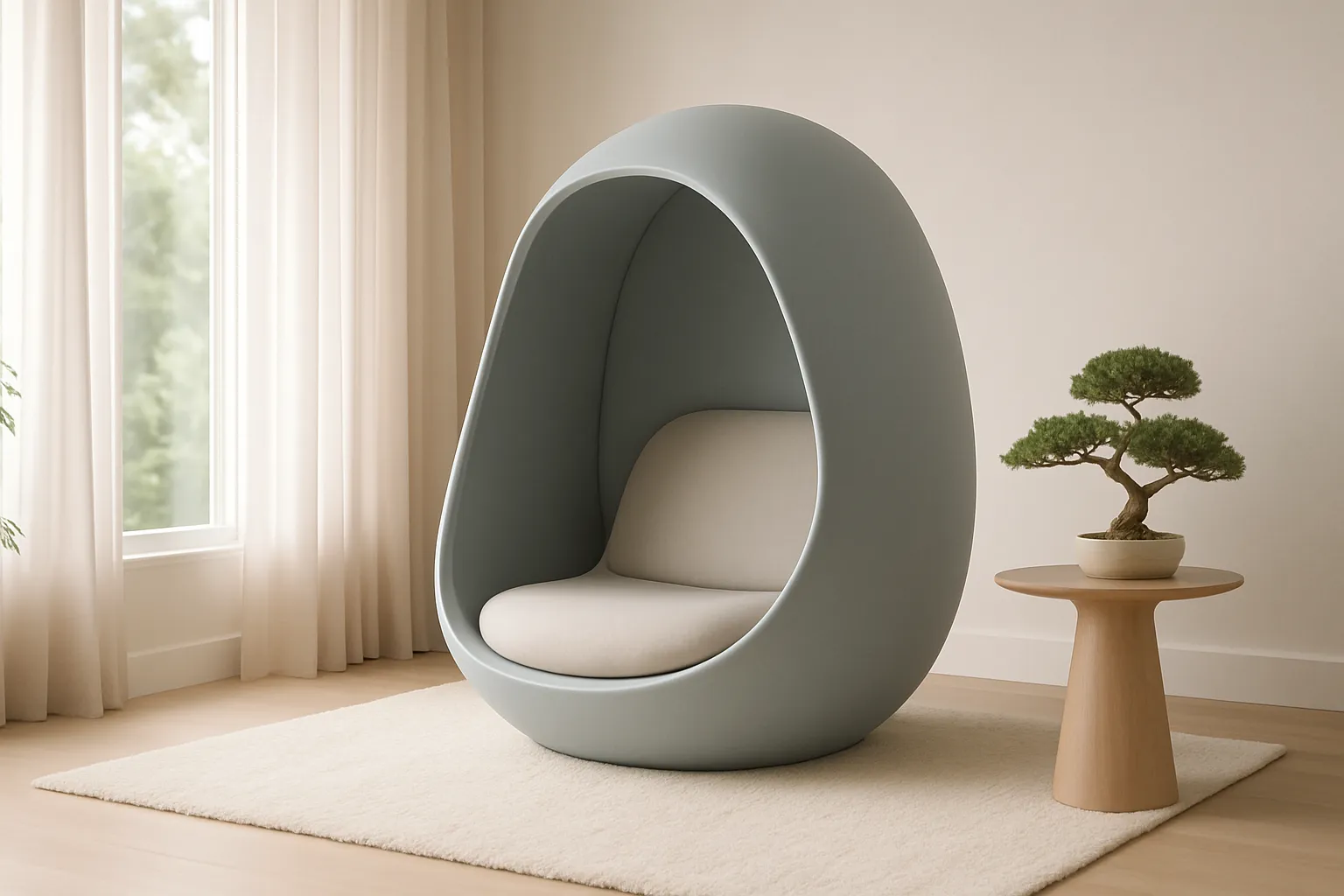In today’s fast-paced world, creating a tranquil home environment is essential for maintaining balance and well-being. This article presents valuable insights from industry experts on how to transform your living space into a haven of relaxation and restoration. From designating intentional living zones to incorporating natural elements and establishing evening rituals, discover practical strategies to cultivate a calming atmosphere in your home.
- Designate Zones for Intentional Living
- Anchor Spaces with Timeless Natural Elements
- Create Clear Boundaries Between Work and Rest
- Establish Evening Rituals for Holistic Restoration
- Use Layered Lighting for Calming Ambiance
- Design a Sensory Garden for Outdoor Tranquility
- Craft an Outdoor Oasis for Evening Relaxation
- Balance Digital Overload with Hands-On Hobbies
- Declutter and Simplify for Mental Clarity
- Minimize Screen Presence to Enhance Unwinding
- Dedicate a Tech-Free Room for Disconnecting
- Choose Soothing Colors for a Relaxing Atmosphere
- Create a Technology-Free Bedroom Sanctuary
- Incorporate Greenery for Natural Calm
- Designate a Tech-Free Space for Recharging
- Prioritize Evening Routine for Productive Mornings
Designate Zones for Intentional Living
My partner and I are both CEOs of our respective companies, and over the years, we’ve tried to create a relaxing environment for ourselves to unwind when we return from the office. As founders, it’s very challenging to disconnect unless we intentionally try to do so.
I run a school where I teach architecture, interior design, and planning. One of the core tenets of having a tranquil space is to think about creating negative space, which essentially allows for your sensory experience to not be overwhelmed and crowded.
We have designated zones for different activities in our house, and we try to maintain a balance of minimalism with functionality. The bedroom does not have a work desk, and the home office does not have a sofa for unwinding. We have countless intentional practices that we have developed over the years to ensure we use each space according to its intended purpose, rather than defaulting to work, which is often the tendency for founders like us.
 Jasmine Ahluwalia
Jasmine Ahluwalia
Founder, Asian School of Design & Applied Vastu
Anchor Spaces with Timeless Natural Elements
The most effective way I unwind at home is by surrounding myself with tactile materials that speak of permanence, with natural stone being the centerpiece. My tip: anchor one room with an element that feels timeless and grounding, like a reclaimed stone wall or a hand-carved limestone fireplace.
I designed a meditation alcove in my home using antique French limestone, its patina weathered by time. The subtle texture and silence of that space slows everything down. No screens. No distractions. Just weight, warmth, and authenticity.
In a world of polished minimalism, I believe what we crave now is depth—materials that hold memory, that ask nothing of us except presence. That, to me, is peace.
 Erwin Gutenkunst
Erwin Gutenkunst
President and Owner, Neolithic Materials
Create Clear Boundaries Between Work and Rest
As an interior designer who works exclusively with busy, high-achieving professionals, I know that CEOs need their homes to be a true escape from the day-to-day. My top tip? Create clear boundaries between where you work and where you unwind.
That might look like a grown-up lounge space (no screens allowed!) with plush chairs and soft lighting, or a bedroom that’s calm, clutter-free, and channels the vibe of your favorite boutique hotel.
I always design with personality in mind – your home should feel like you, not your job. That’s where real relaxation begins.
 Lesley Myrick
Lesley Myrick
CEO + Principal Designer, Lesley Myrick Interior Design
Establish Evening Rituals for Holistic Restoration
As a CEO, my days are saturated with strategy, screens, talking, and decision-making, so my nights must be sacred. I believe deeply in ritual over routine, and for me, creating a home environment that holistically supports rest begins with how I end my day. I light incense (nag champa) the moment I walk into the house to initiate the process.
I only use lamps, no overhead lighting; every seating area has an ultra-soft throw blanket, and all hard furniture, such as tables, is round or has rounded corners. All are designed to take the edge off.
After dinner, I review the evening’s work email and the next day’s meeting schedule, and then select my outfit for the next day, eliminating any last-minute decisions. Then, I step into my “centering ritual.” No screens, no Teams pings, no scrolling, not even music. Just quiet. I start with a scalding hot bath, rich in Epsom salt and essential oils, letting the steam and silence melt away the day’s static. It’s not indulgence—it’s grounding, returning to your center.
Then comes my favorite moment that I look forward to all day: crawling into bed (the Harbor Springs Mattress is a game-changer if you are as obsessed with your sleep experience as I am). If people ask where my favorite place to be is, it’s in my bed. It’s not just comfort—it’s commitment. Commitment to rest, to my nervous system, to my peace, and to letting my brain work untethered to organize what I learned that day and to create connections that I wasn’t able to recognize while awake and stressed. And finally… waking up replenished. I slip into my favorite Irish linen sheets, with lemon water on the nightstand, and release whatever stress didn’t go down the drain, one exhale at a time.
The secret isn’t in doing more to relax—it’s in doing less, with intention. No screens in the bedroom. No to-do lists. Just a space designed to feel like a soft landing.
When your days are built on drive and vision, your evenings’ environment has to be built on stillness and restoration. When you lead others, the most radical thing you can do for your business is protect your own restoration. It’s where clarity lives.
 Julie Koester
Julie Koester
Founder / Managing Partner / Co-CEO, Dragon Horse Agency
Use Layered Lighting for Calming Ambiance
When designing for clients with high-stress jobs, such as CEOs, the goal is to make their home feel like the one place they don’t have to be “on.” One simple tip I always give is to pay attention to lighting. Harsh overhead lights make it difficult to relax. Instead, use a combination of table and floor lamps with warm bulbs. This instantly makes a room feel softer and more calming.
I also like to incorporate natural textures like wood, linen, and soft rugs. You don’t need fancy spa decor. Just a few thoughtful choices can make the space feel like a place to unwind, rather than another task to manage.
 Hayley McAteer
Hayley McAteer
Owner & Interior Designer, Cushee
Design a Sensory Garden for Outdoor Tranquility
As someone who’s constantly dealing with high-voltage work, split-second decisions, and client emergencies, I learned early that if your home doesn’t calm you down, it’ll chew you up just like the job does.
I don’t do scented candles or spa playlists. For me, peace starts with lighting and layout. I rewired parts of my own house so I could have layered lighting in every room. It’s one of the most underrated things people ignore. Most homes are either too dim or lit up like a jobsite. That’s not relaxing. I installed dimmable downlights, warm-white LED strips under the cabinets, and motion sensors in the hallway for when you get up at night. No harsh lights, no flickers—just clean, quiet light that responds to you.
My one tip? Invest in proper lighting control. Create zones. Use dimmers. Set scenes based on time of day or mood. When I come home after a 12-hour shift crawling under houses and dealing with power faults, I hit one switch and the living room settles into a low, warm glow. No stress. Just space to breathe.
Most blokes think comfort is about the couch or TV. It’s not. It’s about controlling your environment with intention. As an electrician, I’ve seen what bad lighting does to a space—it ruins the whole feel. Fix that first, and the rest will follow.
 Alex Schepis
Alex Schepis
Electrician / CEO, Lightspeed Electrical
Craft an Outdoor Oasis for Evening Relaxation
As a CEO, creating a relaxing environment at home starts with intentionally designing spaces that encourage stillness and connection to nature. One of the most effective strategies I’ve found is incorporating a sensory garden into your outdoor space. It doesn’t need to be large or overly complex, but it should engage all the senses with calming elements like fragrant lavender, rustling ornamental grasses, and soft-textured plants such as lamb’s ear. Water features like a small bubbling fountain can add a soothing backdrop of sound, while natural stone paths and shaded sitting areas invite you to slow down and breathe. This idea came from my own experience designing a garden retreat for a client who needed a mental escape from high-pressure corporate life. Drawing on over 15 years of practical experience and my formal training as a certified horticulturist, I was able to select the right plant varieties for year-round tranquility and structure the space to feel both open and private.
The result was a transformation not only in the garden but in how the client used their home. They began starting and ending each day in that space, noting improvements in sleep, clarity, and stress levels. These are the types of outcomes that remind me why I do what I do. It’s not just about cutting grass or planting shrubs; it’s about understanding how environments affect wellbeing and using that knowledge to improve people’s lives. When a space is thoughtfully designed to promote peace of mind, it becomes more than a garden; it becomes a sanctuary.
 Andrew Osborne
Andrew Osborne
Owner, Ozzie Mowing & Gardening
Balance Digital Overload with Hands-On Hobbies
I’ve spent time enhancing my backyard so that I can enjoy my evenings after work outside as much as possible. Not only do I have a pool that I often swim or lounge in to unwind, but I also have a furnished seating area on my patio that I worked really hard to find good furniture for. I specifically looked for chairs and couches that were just as comfortable as they were attractive. I’ll often take my dinner outside and eat on my patio, or I’ll read out there after dinner. I like being out in the fresh air because I feel like it really relaxes me and helps me fully unwind.
 Jeremy Yamaguchi
Jeremy Yamaguchi
CEO, Cabana
Declutter and Simplify for Mental Clarity
CEOs often have people who love them waiting at home. After a long day at work, how can they find the energy to be present with their families?
A solution is having a hobby where they work with their hands. By creating with their hands, they can balance the digital overload of the day.
But more importantly, they can continue to be leaders at home – teaching about their hobby, gifting pieces they’ve made, and fulfilling their artistic ambitions.
Instead of the typical reflex of resting with the TV on, working DIY-style with their hands is much more appropriate to a CEO’s personality.
A tip would be to start small, like getting a pinhole camera, which is the easiest and purest form of photography. They can set up a darkroom in a closet, take and develop beautiful black and white photographs in minutes.
Only 15 minutes of such a hobby is enough to bring joy to whoever is involved, which means it’s perfect for a CEO with many responsibilities.
 Erbil Sivaslioglu
Erbil Sivaslioglu
Founder, Bitti Gitti Design Studio
Minimize Screen Presence to Enhance Unwinding
If you want to keep your head straight and prevent work from eating your soul, your home needs to be calm. Seriously. No more of this “accidentally create a stress cave” nonsense. You need a plan. Don’t just expect that the cosmos will fix your feng shui. Everything in your space should have a purpose. If it doesn’t help you relax, get things done, or simply feel good, why is it there? Get rid of it.
Natural light is like magic. You get more sun, and suddenly you’re not a grouchy goblin anymore. That’s how science works. So, move your desk closer to the window. Or, if you have to live in a basement apartment, hang some sheer curtains to let the light in.
And what about plants? Oh, you want to feel like you have everything under control? Buy some plants for your home. If you’re likely to forget about your plants, choose succulents or ferns. I would kill a cactus if I had the chance. They purify the air and, honestly, they make your space look much less depressing.
Now, let’s talk about color. I can’t help you if you like bedrooms that are bright orange. Stick to blues, greens, or calm neutrals. They help your brain relax and focus. I don’t know, save the vibrant colors for your phone case. Your bedroom should be calming, not a party zone.
Also, please, for the sake of all that is holy, keep your area clean. It’s not that you have to be a neat freak; it’s just that too much clutter makes your brain go crazy. Get furniture that fits your lifestyle and doesn’t take up too much floor space. It feels better when your surfaces aren’t covered with junk and your shelves aren’t in danger of collapsing.
Don’t let your space work against you; make it work for you.
 Gianluca Ferruggia
Gianluca Ferruggia
General Manager, DesignRush
Dedicate a Tech-Free Room for Disconnecting
As a CEO who works in tech, my days are filled with staring at screens. I’m on my computer for many hours each day (not to mention that I actually use multiple computer screens at my desk). Therefore, in order for me to effectively unwind, I have to minimize my screen time at home as much as possible. As tempting as it is to turn on the TV and lie on my couch when I get home, I try to do other things like read or take walks to unwind. To accomplish this, I try to make my home appear as free of screens as possible to reduce the temptation.
 Edward Tian
Edward Tian
CEO, GPTZero
Choose Soothing Colors for a Relaxing Atmosphere
I think this tends to be highly personal for every individual. For me, it has meant having a particular room I can “escape” to, one that truly brings a comforting and relaxing atmosphere. This could be a bedroom, living room, or even a multi-purpose room. Personally, I find that decorating with light colors and choosing a soothing wall color like a neutral green can really help create this atmosphere.
 Carr Lanphier
Carr Lanphier
CEO, Improovy
Create a Technology-Free Bedroom Sanctuary
For me, the process of creating this type of environment at home has involved having a space (in my case, my bedroom) that’s completely free of distracting technology. I have made myself a rule that my phone is not allowed in the bedroom, and I don’t have a TV in there. Pretty much the only tech item is my alarm clock. I think this ability to fully disconnect, even if it’s just in one room of my house, has really helped my home itself feel like more of a sanctuary.
 David Joles
David Joles
Chief Operating Officer, PURCOR Pest Solutions
Incorporate Greenery for Natural Calm
For me, as someone who loves plants and caring for them both personally and professionally, adding houseplants and greenery to my home decor was a no-brainer. I find that nothing creates a calm, relaxing space for me at home better than an environment with lots of natural elements. Plus, caring for the plants themselves is something that I find very meditative and gives me a good chance to disconnect from the workday with an activity I enjoy.
 Ryan Farley
Ryan Farley
CEO, LawnStarter
Designate a Tech-Free Space for Recharging
As a CEO, I keep one space in my home completely tech-free. There are no screens, just soft lighting, calming scents, and perhaps a book. It helps me disconnect and recharge with peace of mind.
 Luke Beerman
Luke Beerman
Owner, Freedom Fence FL
Prioritize Evening Routine for Productive Mornings
Create the understanding that a successful tomorrow starts tonight. I find my most productive days begin with hitting all of my morning habits: wake up at 5:15, morning juice, stretch, work, put dishes away, exercise, shower, and get the kids ready. There’s a 99% chance of hitting my morning routine if I’ve followed my night routine: phone in bedroom by 8:30, in bed by 9:30, read and lights out by 10. Therefore, to guarantee a great day, I put all my focus on maintaining my night routine.
 Nick O’Brien
Nick O’Brien
CEO, Templi

